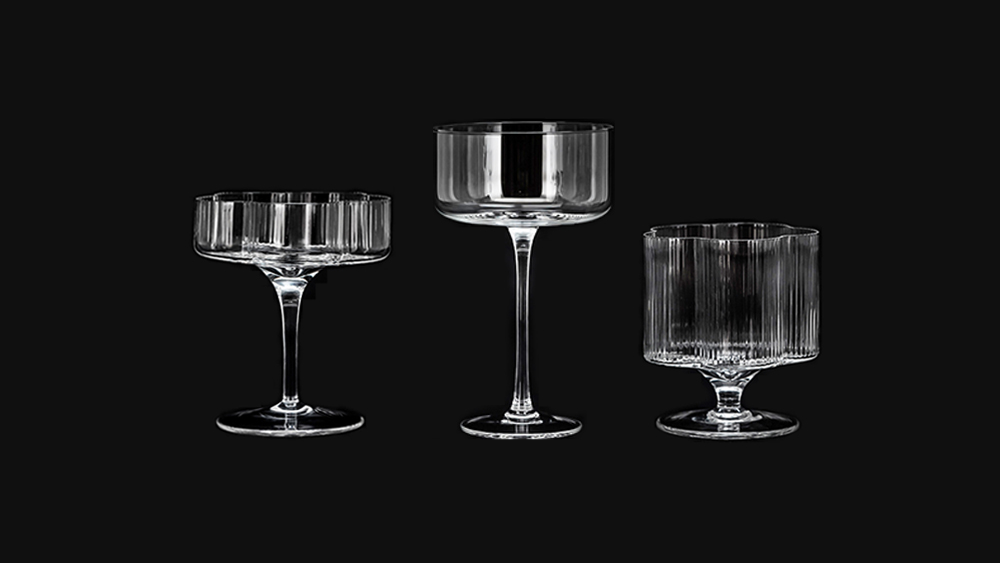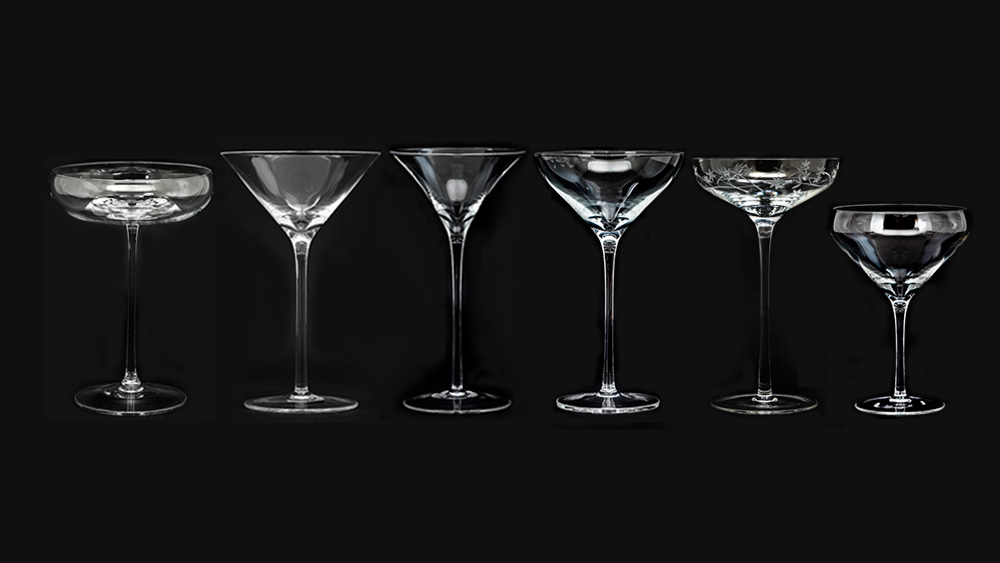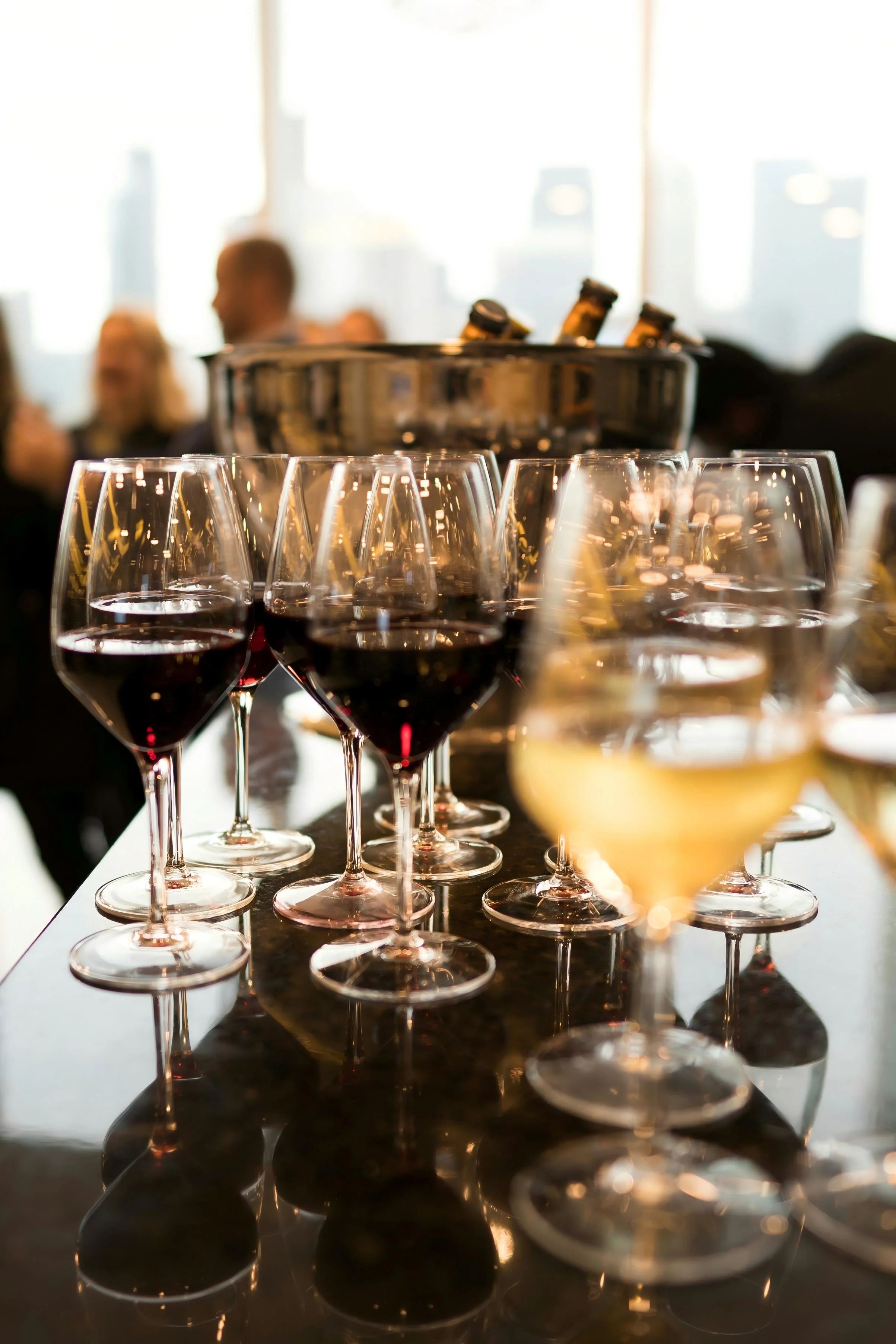Why Does the Shape of a Cocktail Glass Matter So Much?
The form of a cocktail glass isn't just about looking nice. It shapes how you taste and enjoy your drink. Its curves affect smell, coolness, and flavor release, making every sip special.

How Glass Contours Influence Aroma, Temperature, and Flavor Release
Shaping Smells for Better Tasting
A cocktail glass's shape changes how you smell the drink. Curves in the bowl gather scents from ingredients like vermouth, bitters, or citrus oils. A slim rim holds aromas tightly. A wide rim lets them spread out. This changes how flavors feel in your mouth. Smells are a big part of tasting cocktails.
Keeping Drinks Cool
The shape also helps keep drinks cold. Glasses with small tops reduce contact with warm air. This slows down heat gain. It's super important for cocktails served without ice, like stirred or shaken ones. A chilly drink tastes fresher and better.
Why Certain Drinks Demand Specific Rim Diameters or Bowl Depths
Matching Glasses to Cocktails
Some cocktails need special glasses. Martinis and Manhattans use wide-rimmed, shallow bowls. These let smells like citrus or spice escape fast. Drinks like Negronis or Old Fashioneds fit lowball glasses. Their strong flavors grow slowly in these shapes. Each glass suits the drink's style.

How Rims Affect Taste
The rim's width changes how liquid touches your tongue. A broad rim spreads the drink across many taste buds at once. This makes flavors feel rich and complex. A narrow rim guides the drink to certain tongue spots. It can highlight sweet or sour tastes, depending on the glass design.
The Science Behind Stemmed vs. Stemless Designs in Cocktail Service
Why Stems Help
Stemmed cocktail glasses have a purpose. Holding the stem keeps your hand's warmth away from the drink. This is key for cocktails that must stay cold. Stems also prevent fingerprints on the bowl. Clear glass shows off the drink's beauty.
Stemless Glasses and Their Trade-offs
Stemless glasses look modern and store easily. But they let hand heat warm the drink faster. Fingerprints can also cloud the glass. These glasses work better for casual settings, not fancy bars where looks matter.
What Role Does Material Play in Your Cocktail Experience?
The Difference Between Soda-Lime and Lead-Free Crystal—and Why It Matters
Comparing Glass Types
Soda-lime glass is cheap and tough. It's common in many bars. But lead-free crystal shines brighter. It looks clearer and feels fancier. Lead-free crystal’s refractive index boosts glow by 10-15% over soda-lime . (Source: Hexie Glass (hexieglass.com), 2024. Crystal's thin walls make sipping feel smooth and refined.)
Why Glass Stays Clean
Glass is made from silica sand, limestone, and ash. It doesn't soak up smells like plastic does. It also doesn't rust like some metals. This keeps your cocktail glass pure and safe for drinking.
Fragility Concerns: Why Some Glasses Shouldn’t Go in the Dishwasher
Protecting Delicate Glasses
Fancy cocktail glasses are often delicate. Thin rims or etched designs can chip or fade in dishwashers. High heat and strong soaps hurt them. Soda-lime glasses are tougher for busy bars. But pros often hand-wash crystal to keep it nice for years.
How Clarity and Refraction Affect Presentation and Perception
Clear Glass Shows Off Drinks
A super-clear cocktail glass makes drinks look amazing. It shows off colors, bubbles, or layers in cocktails. This adds to the fun of drinking. Crystal glasses bend light more than regular ones. This makes drinks sparkle and seem more exciting.
Which Glass Should You Use for Each Type of Cocktail?
Classic Cocktails That Require a Coupe, Martini, or Nick & Nora Glass
Coupe Glasses for Shaken Drinks
Coupe glasses have wide bowls. They’re great for shaken cocktails like Daiquiris or Sidecars. The open shape lets smells rise freely. They also look elegant. Martini glasses are sharp and dramatic but tip easily.
Nick & Nora for Stirred Classics
Nick & Nora glasses are smaller with narrower rims. They hold aromas better than martini glasses. They’re perfect for stirred drinks like Manhattans. These glasses control dilution well, keeping flavors strong.
Highball vs. Lowball: Choosing the Right Tumbler for Spirit-Forward Drinks
Highball Glasses for Bubbly Mixes
Highball glasses are tall and straight. They’re made for fizzy drinks like Gin & Tonics or Moscow Mules. Their height holds lots of ice to keep drinks cold without watering them down too fast.
Lowball Glasses for Strong Sips
Lowball glasses, or rocks glasses, are short with thick bottoms. They’re great for neat pours or stirred cocktails like Old Fashioneds. The shape slows ice melting, keeping flavors bold.
How Do You Balance Style with Practicality?
Choosing Elegance Without Compromising on Durability
Finding Strong yet Pretty Glasses
Bars need cocktail glasses that look good but don’t break easily. Fancy shapes must be tough enough for busy nights. Glasses with stronger rims or thicker stems last longer. They still look stylish.
What to Look for When Evaluating Weight, Balance, and Thickness
Checking Glass Feel
A good cocktail glass feels right when full. It shouldn’t tip over or feel heavy at the top. The rim’s thickness matters too. Thick rims dull flavors. Thin rims feel nice but might break. Testing samples helps bars pick the best ones.
When Stackability and Storage Become Part of Your Decision Process
Storing Glasses Smartly
Space is tight in bars. Stackable cocktail glasses save room. But stacking can chip rims over time. Bars must check if stacking works without damage. Stemless tumblers stack easily but warm drinks faster. This matters for cold cocktails.
What Makes a Cocktail Glass Truly Suitable for Professional Use?
The Importance of Consistency in Size and Finish Across Batches
Keeping Sizes the Same
All cocktail glasses in a bar should match. Same sizes mean pours are exact. This saves money and keeps recipes right. Matching sets also look good in photos or during service, helping the bar’s brand.
Evaluating Rim Strength and Base Stability for High-Traffic Environments
Tough Glasses for Busy Bars
Busy bars need strong cocktail glasses. Reinforced rims cut down on chips. Heavy bases stop glasses from tipping during fast service. Small flaws can cause spills or upset guests when serving lots of drinks.
Why Optical Clarity Matters More Than You Think Behind the Bar
Clear Glasses Shine
Bar lights show off flaws in glasses. Cloudy or scratched cocktail glasses look bad, even with great drinks. Lead-free crystal’s clarity enhances visual appeal by 20% over soda-lime glass. (Source: Wine-n-Gear (wine-n-gear.com), 2025. Crystal makes drinks look better, improving guest vibes. Soap and water clean them safely.)
Where Can You Find Glassware That Blends Performance with Aesthetic?
Introducing Perfect Select: Crafted for Function, Designed for Professionals
Quality for Pros
Perfect Select makes cocktail glasses for top bars. Their tumblers, goblets, and more mix beauty and toughness. With techniques like decal printing or electroplating, they create stunning designs. Their quality control ensures every glass matches, perfect for busy bar programs.
Why Choose Perfect Select
Perfect Select serves big-name clients worldwide. Their glasses handle the demands of pro bars while looking amazing. From classic to new styles, they offer choices for every mixologist’s needs.
FAQ
Can I use one cocktail glass for many drinks?
Versatile shapes like stemless coupes work for casual bars. But specific glasses match classic recipes better for the best taste.
Are dishwasher-safe cocktail glasses safe long-term?
Only if the label says so. Heat or harsh soaps can harm fancy glasses over time, even if they seem fine at first.
Stemmed or stemless designs—which is better?
Stemmed glasses keep drinks colder but need careful handling. Stemless ones look modern but warm up faster, less ideal for pro bars.
Other Blog










